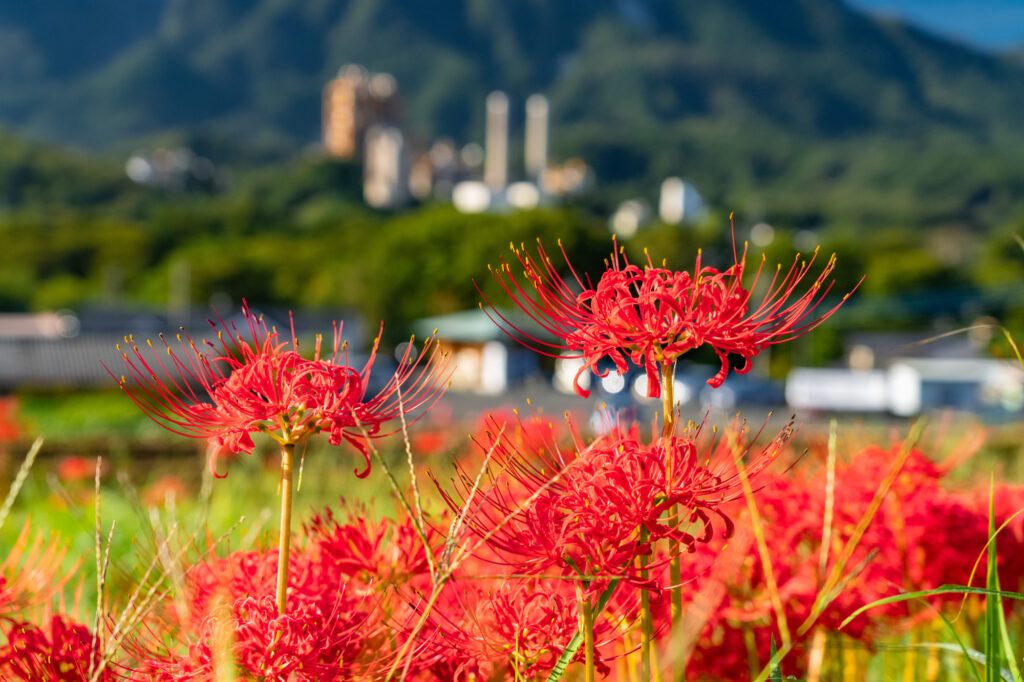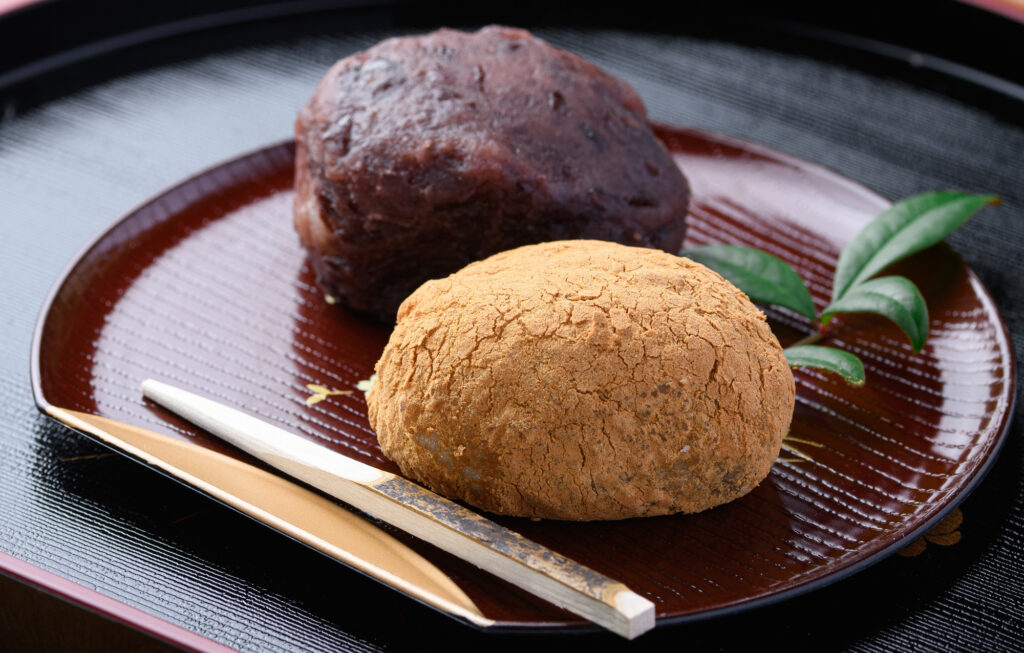September is the best time to see the red spider lilies, a traditional Japanese autumn feature. There is also a special period called "Ohigan," during which people visit graves and hold memorial services. We will introduce the customs of red spider lilies and Ohigan in detail.
1. What is red spider lily?
Characteristics and origin of the name
Higanbana (red spider lilies) are plants with distinctive bright red flowers and are a type of lycoris. They are also known as manjushage (spider spider lilies), and were named "higanbana" (red spider lilies) because they bloom during the autumn equinox. When the flowers bloom, they have no leaves, and the unique appearance of only the flowers blooming at the end of the stem is impressive.
Best time to see red spider lilies and famous places
The best time to see red spider lilies is from mid to late September, when the beautiful flowers bloom all over the country. One particularly famous spot is Kinchakuda Manjushage Park in Hidaka City, Saitama Prefecture. Here, over 5 million red spider lilies bloom all over the place, creating a spectacular sight. Other famous spots for viewing red spider lilies include Arashiyama in Kyoto and Asuka Village in Nara Prefecture.

2. What is Ohigan?
The meaning and period of Ohigan
Ohigan refers to the seven days centered around the spring and autumn equinoxes, plus three days before and after. The autumn equinox falls in late September. According to Buddhist teachings, this period is when the sun rises due east and sets due west, and is considered the time when the "Higan (the world of enlightenment)" and "This shore (this world)" are closest to each other. For this reason, it is considered a time to offer prayers for ancestors and to reflect on oneself as a person living in this world.
Customs performed during the equinox
It is customary to visit the graves of ancestors during Ohigan. Families and relatives gather together, clean the graves, and offer flowers and incense to honor the spirits of their ancestors. People also make offerings to the Buddhist altar at home to show their gratitude to their ancestors.
Offerings and Ohagi
"Ohagi" is a common offering for Ohigan. Ohagi is a Japanese sweet made from glutinous rice, and is usually wrapped in sweet bean paste. During the autumn equinox, Ohagi made from newly harvested rice is offered. By offering these Ohagi at the Buddhist altar and then eating them together as a family, you can feel a connection with your ancestors.

3. Higan customs and autumn scenery in Japan
Feeling the coming of autumn
The Ohigan period is also the time when the seasons change from summer to autumn. During this time, the red flowers of red spider lilies decorate the rice paddy paths and cemeteries, signaling the arrival of autumn. The sight of blooming red spider lilies can be somewhat melancholic, and for Japanese people, it is a symbolic sight that signals the beginning of the quiet autumn.
Regional Higan Customs
In various parts of Japan, there are customs and festivals unique to each region related to Ohigan. For example, in Kyoto there is an event called "Oshorai Mukae" where a memorial service is held to welcome the spirits of ancestors into the home. By learning about the unique customs of each region and actually visiting and experiencing them, you can deepen your understanding of Japanese culture and history.
The red spider lilies and the customs of Ohigan are loved by many people as a seasonal feature of autumn in Japan. The beautiful scenery of the red spider lilies in full bloom and the Ohigan period, when people offer prayers for their ancestors, are a precious time to feel the change of seasons and to come into contact with Japanese traditions and culture. Why not visit famous spots for viewing red spider lilies this fall and experience the customs of Ohigan?
